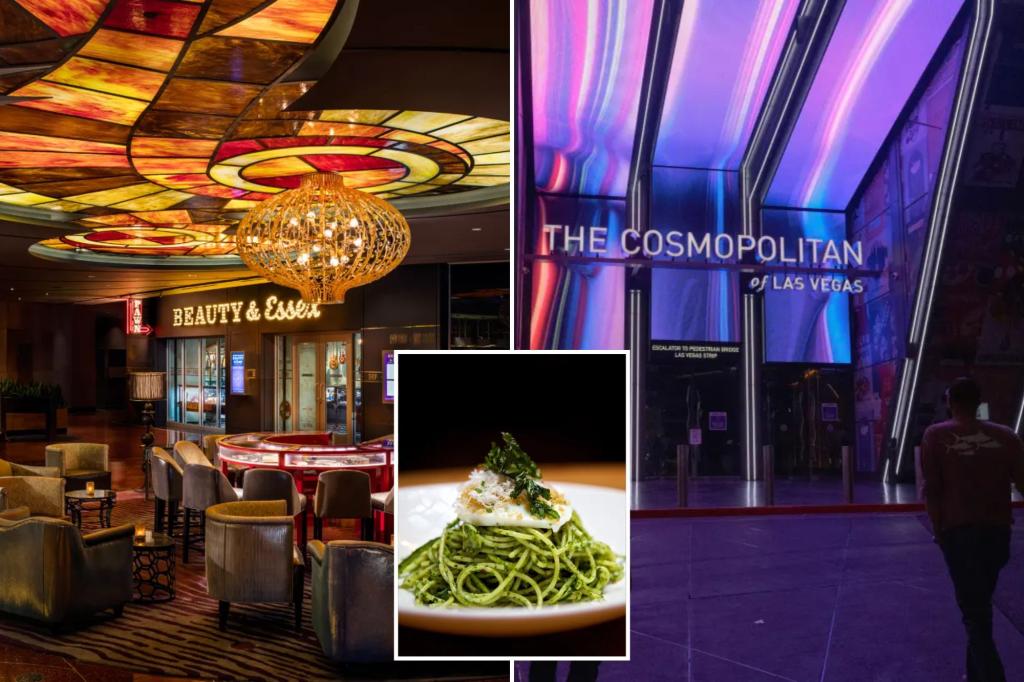This tragic case underscores the devastating consequences that can arise from inadequate handling of food allergies, highlighting the responsibilities of restaurants, emergency responders, and broader societal awareness in preventing such fatalities. Abraham Kenneth Ezra Williams, a man with a known shellfish allergy, lost his life after consuming a pesto dish at the Beauty & Essex restaurant within The Cosmopolitan of Las Vegas. The lawsuit filed by his family alleges a cascade of failures that contributed to his death, beginning with the restaurant’s negligence in serving him a dish contaminated with shellfish, despite being informed of his allergy. It further accuses the restaurant staff of hindering immediate assistance and impeding access to Williams as he experienced anaphylactic shock, thereby delaying crucial intervention. The lawsuit extends its accusations to the paramedics who responded, claiming their delayed treatment and inadequate monitoring further worsened Williams’ condition, ultimately leading to his demise. This tragic event spotlights the multifaceted nature of failures that can contribute to such avoidable deaths, ranging from food preparation and service protocols to emergency response procedures.
The lawsuit alleges that Williams explicitly informed the restaurant of his shellfish allergy before ordering the spaghettini with pesto. While traditional pesto does not contain shellfish, some commercial varieties may include trace amounts of ingredients like anchovies, a fact that raises questions about the restaurant’s awareness and control over its ingredients. Upon consuming the dish, Williams immediately experienced anaphylactic shock, a severe and rapid allergic reaction that can be life-threatening if not addressed promptly. The lawsuit paints a disturbing picture of the restaurant’s response, claiming that staff erected a barrier around Williams, preventing friends and others from administering aid or performing life-saving measures. This alleged inaction represents a critical lapse in the restaurant’s duty of care, potentially exacerbating the already dire situation. The family contends that these delays, coupled with the subsequent alleged shortcomings in emergency medical response, directly contributed to Williams’ death, underscoring the importance of swift and appropriate action in anaphylaxis cases.
The lawsuit further implicates the responding paramedics from Community Ambulance and the Clark County Fire Department in Williams’ death. It asserts that they deviated from standard protocol for anaphylactic shock, delaying the administration of necessary medication and failing to adequately monitor his condition. This alleged negligence, the lawsuit argues, allowed Williams’ state to deteriorate further before reaching the hospital. Upon arrival, doctors were forced to perform a cricothyrotomy, an emergency procedure to create an airway due to severe swelling that prevented intubation. Williams was placed on a ventilator but ultimately succumbed to the allergic reaction four days later. The lawsuit’s claims against the paramedics underscore the critical role of first responders in anaphylaxis cases, highlighting the need for proper training and adherence to established protocols in managing these life-threatening emergencies.
Williams’ family is seeking damages exceeding $15,000, encompassing both general and special damages, as well as unspecified punitive damages. The lawsuit demands a jury trial to determine the liability of the defendants, which include the restaurant, the resort, and potentially the ambulance service. This legal action aims not only to hold the responsible parties accountable but also to raise awareness and potentially drive change in how food allergies are handled in restaurants and emergency settings. The tragic outcome of this case emphasizes the need for robust protocols, meticulous ingredient labeling, and staff training to prevent future incidents. It also underscores the importance of public awareness about the severity of food allergies and the necessity of prompt and appropriate responses to allergic reactions.
The tragic circumstances of Williams’ death are sadly not an isolated incident. This year has witnessed several other fatalities related to food allergies, emphasizing the ongoing challenges in managing these conditions. These include the death of a New York University doctor at Walt Disney World Resort after unknowingly consuming dairy and nuts, to which she was allergic. Further highlighting the risks, a Wisconsin college student died after consuming a gluten-free brownie unknowingly containing peanut flour. In another case, a Texas college student lost her life on a first date due to a restaurant’s undisclosed addition of peanut sauce to a dish she had previously eaten safely. These cases collectively highlight systemic issues relating to food allergen disclosure, labeling, and preparation, particularly within the food service industry.
These tragic events underscore a critical need for increased vigilance and awareness surrounding food allergies. Restaurants must implement stringent protocols for ingredient management, allergen disclosure, and staff training to ensure the safety of their patrons. Clear and accessible labeling of food products is essential to empower individuals with allergies to make informed choices. Equally crucial is the need for widespread education about the severity of allergic reactions and the appropriate responses, especially within the food service industry and among first responders. Implementing these measures is paramount to preventing future tragedies and safeguarding the lives of individuals with food allergies. The collective impact of these cases should serve as a catalyst for comprehensive change, promoting a safer environment for those living with these potentially life-threatening conditions.

